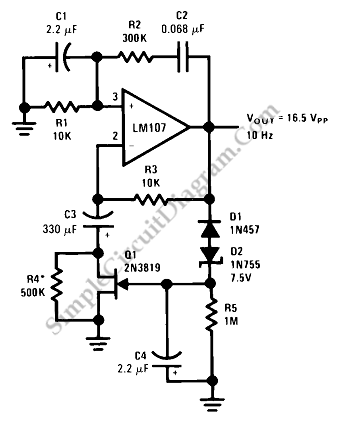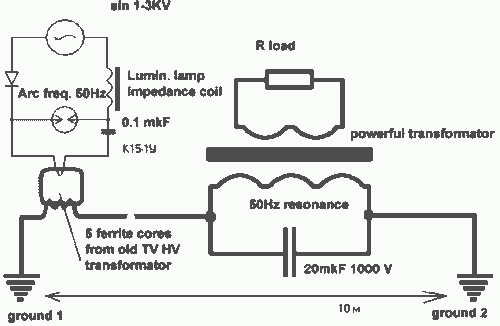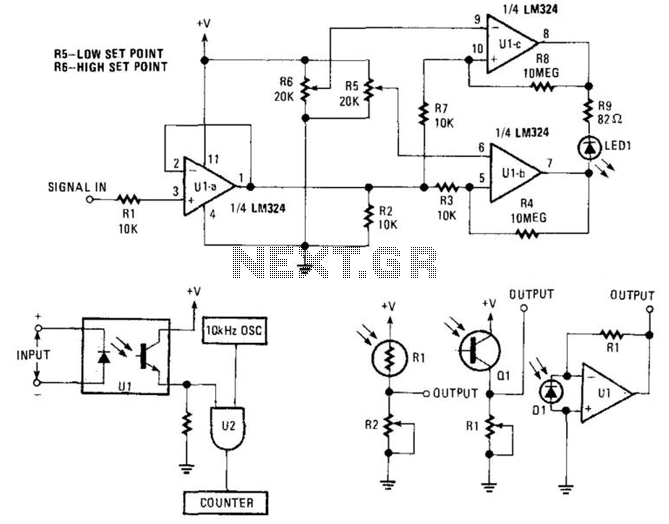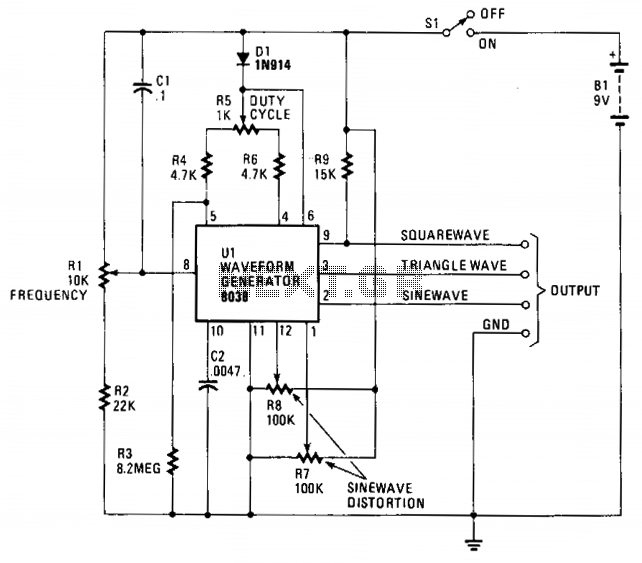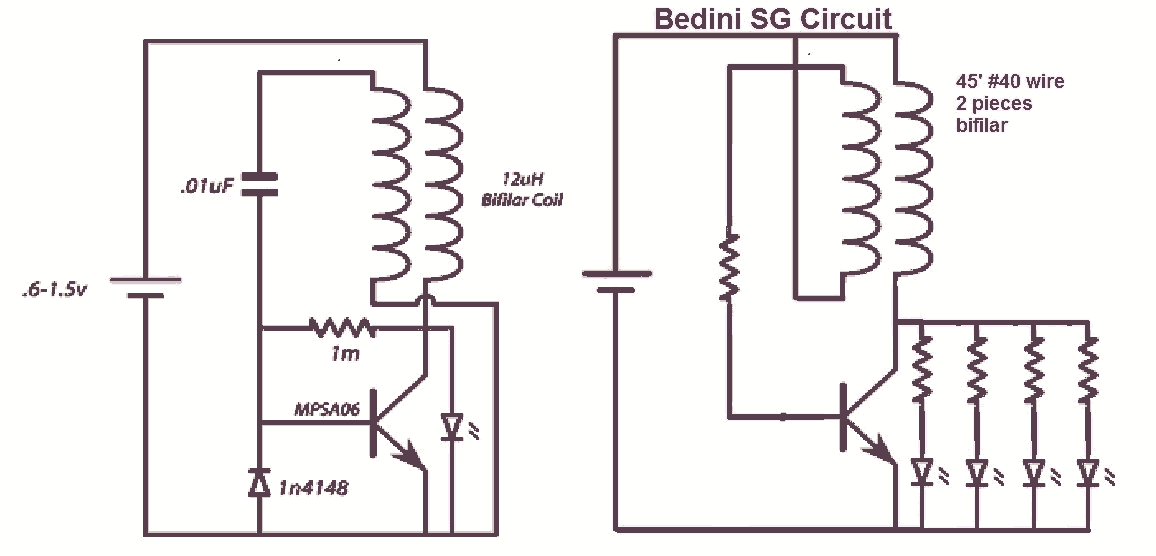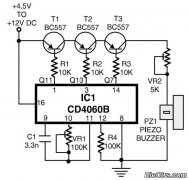
Function Oscillator Generator (MAX038)
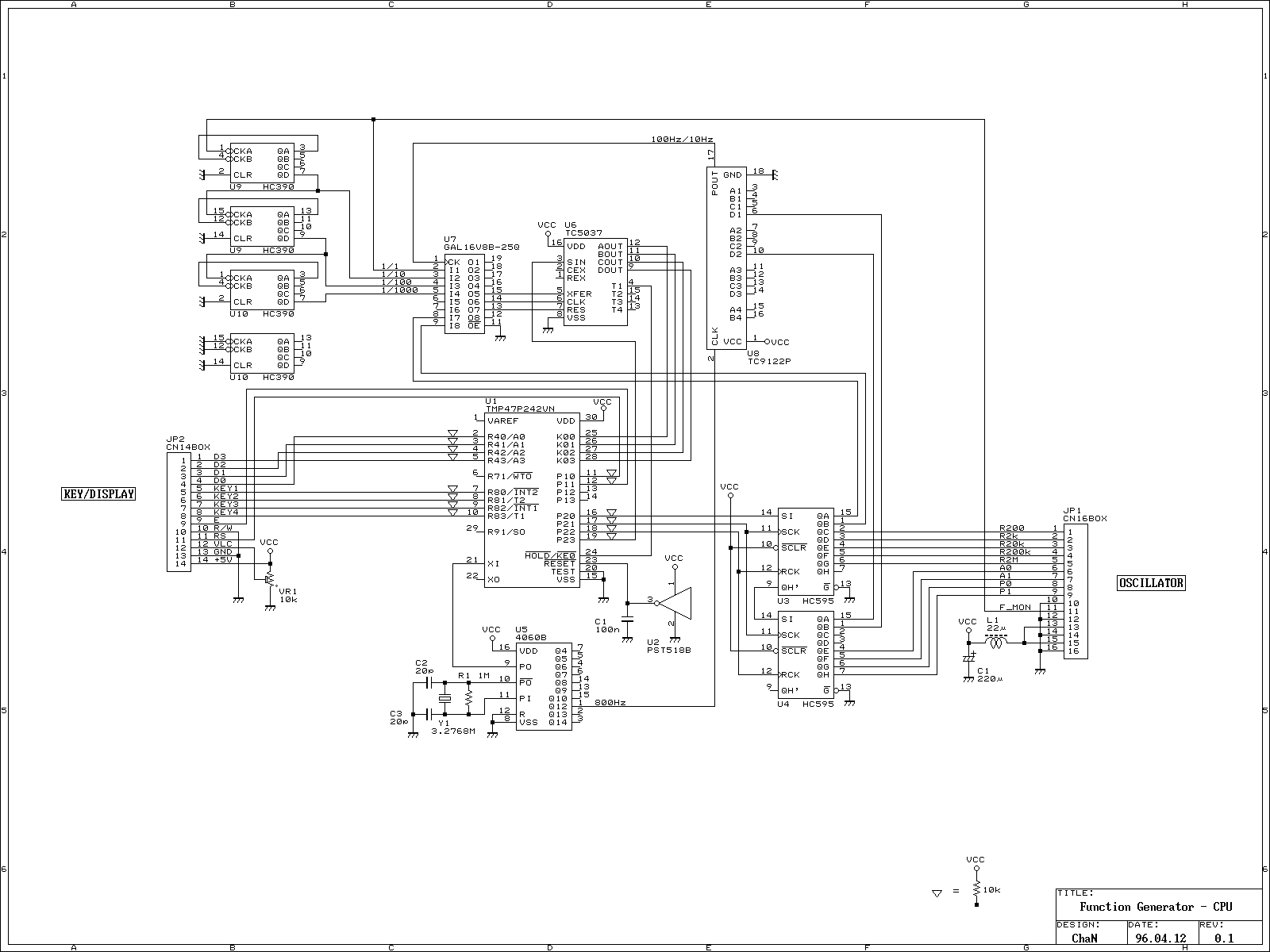
Oscillation frequency 10Hz ~ 20MHz, 6 ranges. Analog output Sine, triangle, square wave (0 ~ 4Vp-p, Zo = 50Ω). TTL Output Clock (Duty: 50% fixed) positive negative pulse (variable pulse width). Operating system Show: oscillation frequency and operating mode LCD display. Operation: Operation mode switching and analog volume adjustment. Power AC 100V. Production cost ¥ 10,000 or less. The circuit diagram has not been specified, as small as possible to process and put the power supply impedance bypass capacitor is not appropriate to say. Well, around here is a basic high-speed circuits. LM6361 analog output buffer is used. This amp I have GBW = 50MHz bandwidth, this is a little short. AV = +6 dB, so that you are using in, 20MHz in the vicinity would become almost a sine wave to square wave output is selected. More bandwidth (200MHz degree) you may want to use a buffer amplifier. More: Oscillator circuitry is in partnership with the usual universal board should not. First, it is not stable. In partnership with Universal board failed at the first regular production of it now ^ ^ so, the total ground on one side you must use a universal board. component side to the ground, drill holes in the component leads Try to not counted the short position. lead to ground are soldered directly to the ground. In addition, the oscillator circuit board has a mix of digital IC, they cut a slit in the ground plane thoroughly separated. especially the wiring of the timing capacitor MAX038 is a better system and away from digital as well Manai noise. Waveform generator IC for Maxim MAX038 is a function generator was used. Product Information from the amused to find the Maxim IC is listed, it is! With that said, making?I?Chimashita. MAX038 chip is one 20MHz capable of high performance analog waveform to the IC, there was a long time ICL8038 is feeling like a sophisticated version. They become the cornerstone of this function generator, and most of the performance and the performance of the MAX038 should I say.
The described circuit is a versatile waveform generator capable of producing oscillations across a frequency range of 10 Hz to 20 MHz, with six selectable ranges. The output can generate sine, triangle, and square waveforms with an amplitude of 0 to 4 Vp-p, and an output impedance of 50Ω, suitable for interfacing with various electronic loads. The circuit also provides a TTL output for clock signals, characterized by a fixed 50% duty cycle and a variable pulse width, allowing for a wide range of applications in timing and control circuits.
The operation of the device is facilitated by an LCD display that shows both the oscillation frequency and the operating mode, enhancing user interaction. The unit is powered by an AC supply of 100V and is designed to be economically feasible, with a target production cost of ¥10,000 or less.
The circuit design emphasizes the importance of stability and performance, particularly in high-speed applications. It utilizes the LM6361 analog output buffer, which has a gain-bandwidth product (GBW) of 50 MHz. While this bandwidth is adequate for many applications, it may be insufficient for generating clean square waves at the upper frequency limits. For applications requiring higher fidelity at 20 MHz, a buffer amplifier with a GBW of at least 200 MHz is recommended.
The construction of the oscillator circuitry is critical to its performance. It is advised against using a standard universal board due to stability issues observed in initial production runs. Instead, a dedicated circuit board is recommended, ensuring that the ground plane is properly managed. All component leads should be soldered directly to the ground to minimize inductive coupling and noise.
Moreover, the circuit design incorporates digital integrated circuits (ICs), necessitating careful routing of the ground planes to avoid interference. The timing capacitor associated with the MAX038 waveform generator should be placed away from digital components to mitigate noise pickup. The MAX038 itself is a high-performance function generator IC capable of producing high-quality analog waveforms up to 20 MHz, representing an advancement over older designs such as the ICL8038.
In summary, careful consideration of the circuit layout, component selection, and grounding techniques is essential for achieving optimal performance in this waveform generator design. The integration of the MAX038 chip as the core waveform generation component ensures high-quality output suitable for a variety of electronic applications.Oscillation frequency 10Hz ~ 20MHz, 6 ranges. Analog output Sine, triangle, square wave (0 ~ 4Vp-p, Zo = 50?). TTL Output Clock (Duty: 50% fixed) positive negative pulse (variable pulse width). Operating system Show: oscillation frequency and operating mode LCD display. Operation: Operation mode switching and analog volume adjustment. Power AC 100V. Production cost \ 10,000 or less. The circuit diagram has not been specified, as small as possible to process and put the power supply impedance bypass capacitor is not appropriate to say. Well, around here is a basic high-speed circuits. LM6361 analog output buffer is used. This amp I have GBW = 50MHz bandwidth, this is a little short. AV = +6 dB, so that you are using in, 20MHz in the vicinity would become almost a sine wave to square wave output is selected.
More bandwidth (200MHz degree) you may want to use a buffer amplifier. Oscillator circuitry is in partnership with the usual universal board should not . First, it is not stable. In partnership with Universal board failed at the first regular production of it now ^ ^ so, the total ground on one side you must use a universal board. component side to the ground, drill holes in the component leads Try to not counted the short position.
lead to ground are soldered directly to the ground. In addition, the oscillator circuit board has a mix of digital IC, they cut a slit in the ground plane thoroughly separated. especially the wiring of the timing capacitor MAX038 is a better system and away from digital as well Manai noise.
Waveform generator IC for Maxim MAX038 is a function generator was used. Product Information from the amused to find the Maxim IC is listed, it is! With that said, making?I?Chimashita. MAX038 chip is one 20MHz capable of high performance analog waveform to the IC, there was a long time ICL8038 is feeling like a sophisticated version. They become the cornerstone of this function generator, and most of the performance and the performance of the MAX038 should I say.
🔗 External reference
The described circuit is a versatile waveform generator capable of producing oscillations across a frequency range of 10 Hz to 20 MHz, with six selectable ranges. The output can generate sine, triangle, and square waveforms with an amplitude of 0 to 4 Vp-p, and an output impedance of 50Ω, suitable for interfacing with various electronic loads. The circuit also provides a TTL output for clock signals, characterized by a fixed 50% duty cycle and a variable pulse width, allowing for a wide range of applications in timing and control circuits.
The operation of the device is facilitated by an LCD display that shows both the oscillation frequency and the operating mode, enhancing user interaction. The unit is powered by an AC supply of 100V and is designed to be economically feasible, with a target production cost of ¥10,000 or less.
The circuit design emphasizes the importance of stability and performance, particularly in high-speed applications. It utilizes the LM6361 analog output buffer, which has a gain-bandwidth product (GBW) of 50 MHz. While this bandwidth is adequate for many applications, it may be insufficient for generating clean square waves at the upper frequency limits. For applications requiring higher fidelity at 20 MHz, a buffer amplifier with a GBW of at least 200 MHz is recommended.
The construction of the oscillator circuitry is critical to its performance. It is advised against using a standard universal board due to stability issues observed in initial production runs. Instead, a dedicated circuit board is recommended, ensuring that the ground plane is properly managed. All component leads should be soldered directly to the ground to minimize inductive coupling and noise.
Moreover, the circuit design incorporates digital integrated circuits (ICs), necessitating careful routing of the ground planes to avoid interference. The timing capacitor associated with the MAX038 waveform generator should be placed away from digital components to mitigate noise pickup. The MAX038 itself is a high-performance function generator IC capable of producing high-quality analog waveforms up to 20 MHz, representing an advancement over older designs such as the ICL8038.
In summary, careful consideration of the circuit layout, component selection, and grounding techniques is essential for achieving optimal performance in this waveform generator design. The integration of the MAX038 chip as the core waveform generation component ensures high-quality output suitable for a variety of electronic applications.Oscillation frequency 10Hz ~ 20MHz, 6 ranges. Analog output Sine, triangle, square wave (0 ~ 4Vp-p, Zo = 50?). TTL Output Clock (Duty: 50% fixed) positive negative pulse (variable pulse width). Operating system Show: oscillation frequency and operating mode LCD display. Operation: Operation mode switching and analog volume adjustment. Power AC 100V. Production cost \ 10,000 or less. The circuit diagram has not been specified, as small as possible to process and put the power supply impedance bypass capacitor is not appropriate to say. Well, around here is a basic high-speed circuits. LM6361 analog output buffer is used. This amp I have GBW = 50MHz bandwidth, this is a little short. AV = +6 dB, so that you are using in, 20MHz in the vicinity would become almost a sine wave to square wave output is selected.
More bandwidth (200MHz degree) you may want to use a buffer amplifier. Oscillator circuitry is in partnership with the usual universal board should not . First, it is not stable. In partnership with Universal board failed at the first regular production of it now ^ ^ so, the total ground on one side you must use a universal board. component side to the ground, drill holes in the component leads Try to not counted the short position.
lead to ground are soldered directly to the ground. In addition, the oscillator circuit board has a mix of digital IC, they cut a slit in the ground plane thoroughly separated. especially the wiring of the timing capacitor MAX038 is a better system and away from digital as well Manai noise.
Waveform generator IC for Maxim MAX038 is a function generator was used. Product Information from the amused to find the Maxim IC is listed, it is! With that said, making?I?Chimashita. MAX038 chip is one 20MHz capable of high performance analog waveform to the IC, there was a long time ICL8038 is feeling like a sophisticated version. They become the cornerstone of this function generator, and most of the performance and the performance of the MAX038 should I say.
🔗 External reference
